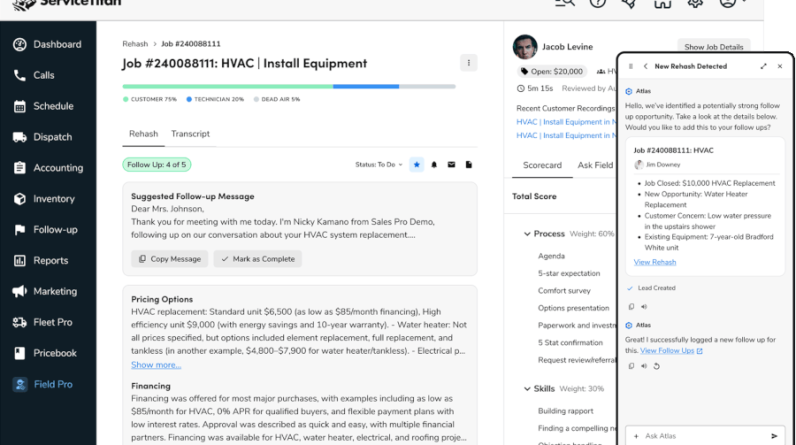The Gist
- Not just efficiency. Sales and marketing leaders are getting more comfortable with leveraging generative AI tools for revenue generation and boosting profits.
- Not just internal. Generative AI is amplifying marketing and sales outcomes not just for internal teams but for channel and strategic partners externally too.
- Not just automation. Generative AI in marketing and sales is all about task augmentation, and B2B organizations are realizing the compounded effects of human + AI efforts.
When ChatGPT stormed into our lives in 2022, sales and marketing pros recognized it as a tool to make work more efficient, lowering expenses, time and effort across multiple tasks related to their jobs. They were about to discover generative AI in marketing and sales.
While everyone is still very much in experimentation mode, marketers are now also using generative AI to improve campaign effectiveness and boost revenues.

Four pros share the areas where generative AI in marketing and sales is making the most impact in their organizations and their key learnings so far.
Generative AI in Content marketing
Content is widely regarded as essential for B2B sales and marketing, but there is never enough of it, and everyone has limited resources to create more. It’s no surprise that generative AI in marketing and sales has revolutionized how B2B companies produce content, run campaigns and sell at scale.
AI can automate almost every process in the content marketing workflow, starting with buyer research and content strategy, content creation, production and amplification. It’s especially good with repetitive tasks, such as research on customer personas, keyword analysis, SEO, editing and summarization.
The speed and scale of these operations, combined with the team’s intrinsic customer knowledge allows us to refine messaging with a unique perspective and understand what resonates best with customers, says Esther Flammer, chief marketing officer at project management platform Wrike. Aside from pressure testing different use cases to accelerate output and learning how to scale SEO responsibly, her team has tripled the number of gated assets produced in a month and produced 10 times the number of SEO blogs in a 30-day period compared to the previous year’s average.
With AI, says Domenic Colasante, CEO of B2B marketing-as-a-service provider 2X, his team is seeing a significant increase in the content engine output, with no incremental labor or production cost. For example, writing time for long-form pillar content has been reduced by 30-50%, video production has increased by 40%, ad creative production is 33% faster, and multi-touch integrated email campaigns take about 90% less time to create and write. The time saved is being reinvested to produce up to 6-12 times more campaign activity volume in the same amount of time in some cases, allowing for more hyper-targeted offers and additional use-case-oriented messaging.
Related Article: The AI and Content Marketing Paradox: Empowering and Threatening the Future
Generative AI for Smarter Audience Segmentation and Targeting
While marketing teams have already been using intent data and predictive analytics for years based on historical data, AI-driven tools handle much larger datasets, analyze millions of data points, identify patterns and trends in real-time, and help marketers quickly curate more specific marketing tactics in response to audience needs, says Flammer.
At the customer profile level, generative AI can leverage massive amounts of first-party consumer data to build out detailed customer profiles, cutting out months of research and documentation and helping marketers prioritize the highest-potential audience segments.
Given the correct direction, AI can also transform ABM efforts by segmenting target audiences within an industry and geography by behavior, demographics, and interests to better understand the total addressable market and guide personalized messaging, says Dave Taylor, CMO at channel management solutions provider Impartner.
Related Article: Personalization and Segmentation: How They’re Different and Why It Matters
Real-Time Ad Optimization With Generative AI
Generative AI tools constantly test keywords, ads, bids, audiences and budgets to automate highly targeted ad campaigns and optimize leads based on the highest probability of conversion. It is also possible to track and optimize ad content, click rates and conversions based on real-time actions and campaign goals. These AI-powered capabilities are especially helpful when advertising expertise is limited, says Taylor.
For example, power equipment manufacturer Stanley Black & Decker (SB&D) found local channel partners often lack sufficient skills, resources and time to launch ad campaigns themselves. While potential buyers searched online for products such as land and robotic mowers, SB&D’s local channel partners were directing marketing spend toward more familiar offline efforts like brochures, flyers and events. An AI-powered ad optimization strategy helped scale support to local dealers by setting up Google Search campaigns they could never have set up themselves, leading to a 49% decrease in cost per lead and a 163% increase in local dealer leads.
View all
Related Article: Why Real-Time Feedback Is Crucial for Modern CX Strategies
More Innovation in Ad Creatives With Generative AI
AI could help create ads that we might not have thought of, which after vetting and editing can be sent directly into real-world testing to let prospects/consumers vote with their clicks, says Colasante. His team has seen multiple instances where the human-prompted and AI-created copy performs better than human-authored sets, with over 55% improvements in advertising conversion rates and proportional reductions in advertising cost per engagement/activity metrics in some cases.
AI copywriting assistants, with enough training, can also approximate brand voice more consistently than humans. That not only increases output without impacting the quality but also frees up copywriters to play a more editorial/curatorial role to better support marketing efforts.
Related Article: A Game Plan for Generative AI in Customer Experience & Marketing
Sales Training With Generative AI
Sales training is an underexplored use-case for generative AI, says Taylor, who believes generative AI tools can essentially offer sales enablement at the cost of an AI license.
These tools can be taught to simulate conversations between a salesperson and their prospective buyer to better understand their pain points and solution preferences.
AI-powered sales intelligence engines, adds Vlad Voskresensky, CEO of guided selling platform Revenue Grid, act as a “sales co-pilot” by augmenting the selling process, providing data-backed recommendations for the next best steps, and real-time, contextual, personalized notifications to guide them through the most winning path at the most pivotal moments.
AI-Driven Lead-Scoring
Generative AI tools can help deliver a substantial improvement in the ability to generate pipeline and revenue, boosting sales efficiency with the ability to process and analyze extensive datasets, identify patterns, and indicate the most promising leads. Voskresensky says it’s helping sales teams allocate resources more strategically, concentrating on the best leads to drive revenue growth and reduce costs.
Generative AI Sales Process Automation
BDR teams spend up to 70% of the time on non-selling activities, and up to three hours a day on admin, switching between 10 different tools to prospect, says Colasante. AI can automate much of that repetitive work including revalidating the pipeline and notifying account changes, while enabling reps to spend their time on higher-value touchpoints that more efficiently close deals. For example, 6sense, a 2X partner, uses a generative-AI enabled conversational email solution in their email writing and prospect communication process which contributes 10% of the new pipeline generation from marketing-engaged accounts. For an enterprise-sized SaaS company, that’s a very meaningful contribution to their overall sales/revenue growth efforts, he adds.
Generative AI Price Optimization
Generative AI also gives us the tools to optimize pricing strategies, says Voskresensky. Identifying suitable price points that work for customers while remaining competitive not only enhances revenue generation potential but also increases conversions and boosts profitability.
Generative AI + Human Expertise Is the Winning Formula for B2B Sales and Marketing
The main learning so far for the experts who contributed to this story, is that the human element remains a vital key to unlocking AI’s full potential, acting as a force multiplier to let teams do more with less.
But like with any revolutionary technology, a learning curve does exist, and change management is a factor to consider, says Colasante. At 2X for example, an “AI council” made up of human functional experts — writers, designers and campaign specialists — steers the testing, verification, adoption, deployment, and continuous improvement of AI initiatives to bridge proven practices with what’s possible at the bleeding edge of new technology.
At Wrike, Flammer’s team conducted research that shows that upskilling employees is the best way to improve efficiency, and the AI wave is no exception. For example, editors will not only need to specialize in editing but also in optimizing AI content. Similarly, content writers have to focus on adding value to AI-generated content rather than simply refining it. Specific skills such as prompt engineering help teams develop a better understanding of the capabilities and limitations of large language models.
Generative AI in marketing and sales is at its best when paired with human talent, agrees Taylor. For instance, accelerating pipeline growth with generative AI tools is not just about automation, but the augmentation of tasks. Having AI chew through large sets of specific data, organize it, and make sense of it really frees up human horsepower for other value-added tasks or knowledge work.
The next generation of marketing directors and VP leaders will not only know how generative AI in marketing and sales can be used, but they will also know how to manage their teams’ use of AI, he adds. These leaders will run efficient and intelligent AI tools within their tech stack to reduce redundant headcount and enable cost-effective scaling. Helping teams understand generative AI use cases, benefits, and limitations will ultimately let them work with, and not against, AI.






